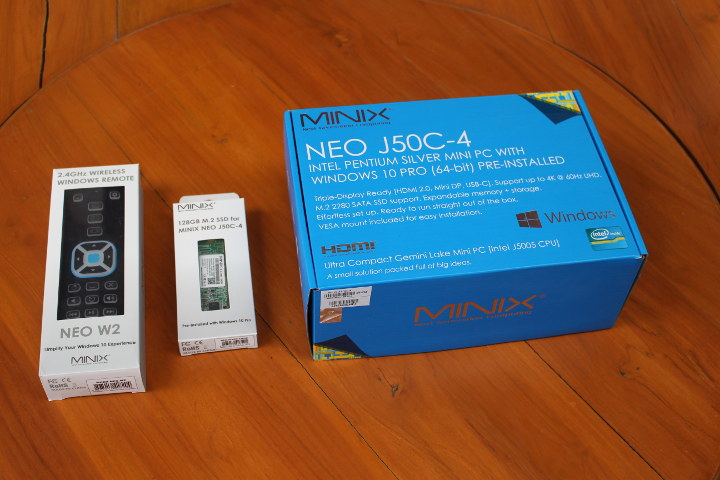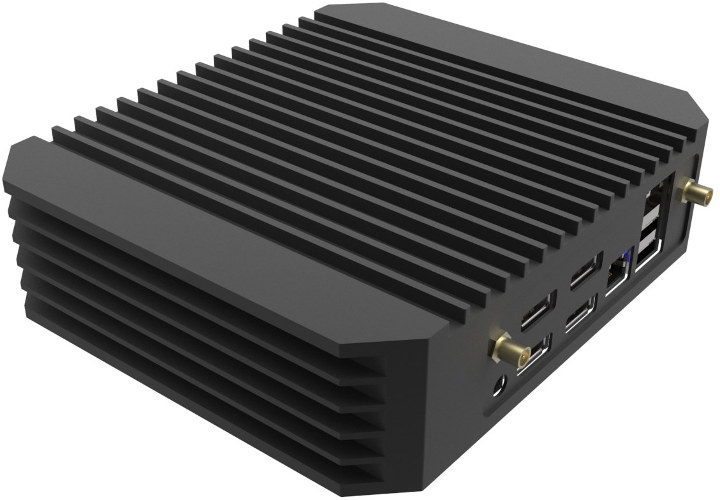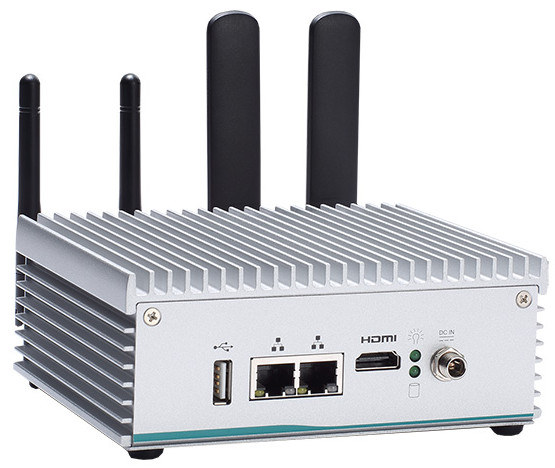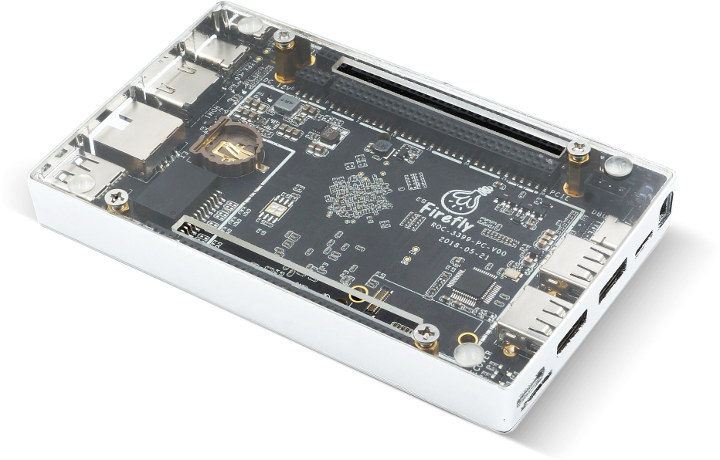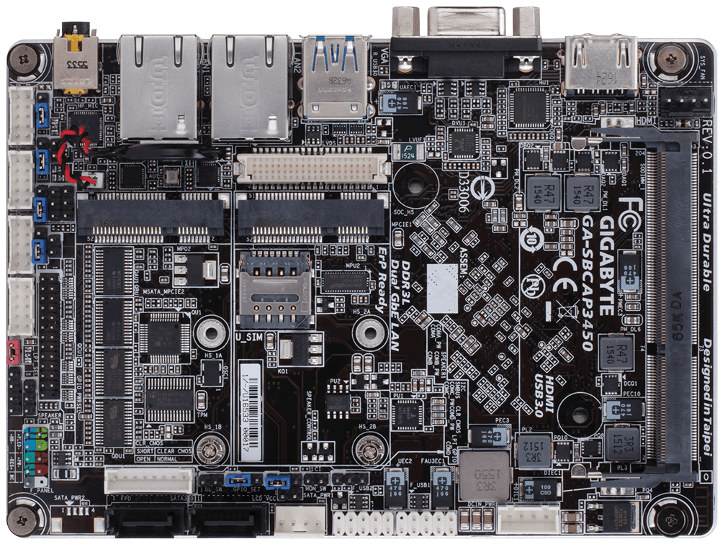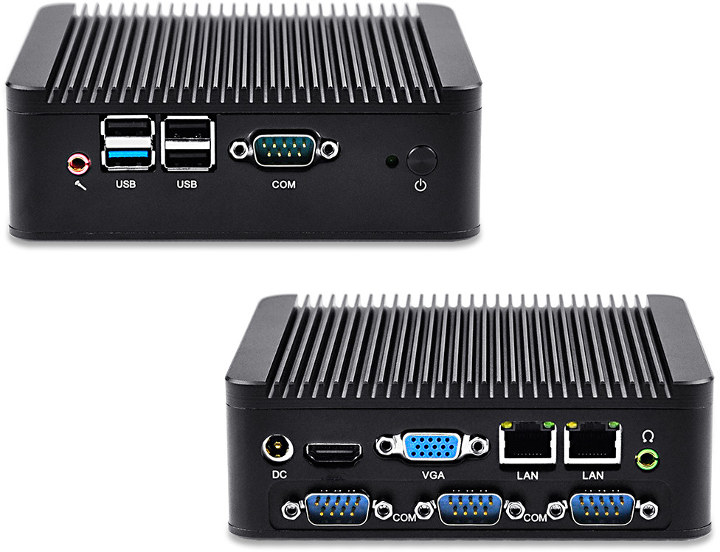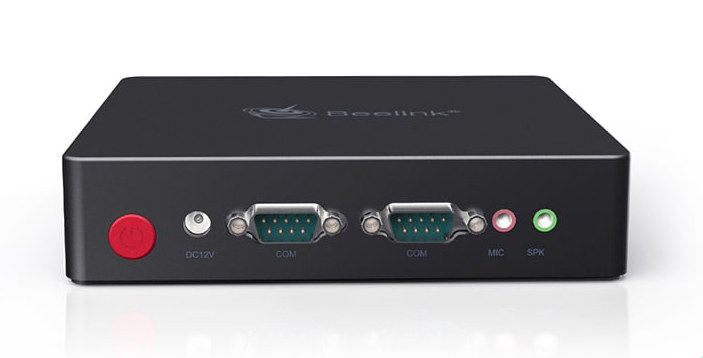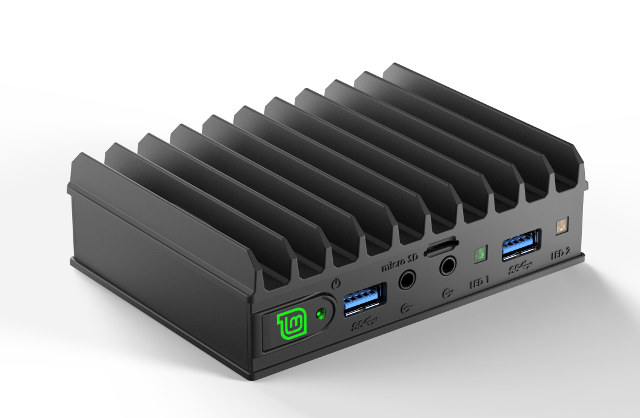MINIX has just announced a new Windows 10 Pro mini PC with MINIX NEO J50C-4 mini PC that just looks like their previous models like MINIX NEO N42C-4, except it comes with a Pentium Silver J5005 “Gemini Lake” processor. The company sent me a sample together with some accessories, and it will be interesting to see how it performs. But before I’ll go through the specifications, checking the devices and some extra accessories namely NEO W2 windows remote control, and an M.2 SSD pre-loaded with Windows 10 Pro. Finally, I’ll have a look at the internals in the first part of this review. MINIX NEO J50C-4 Specifications SoC – Intel Pentium Silver J5005 quad core “Gemini Lake” processor @ 1.50 / 2.80 GHz with 18 EU Intel UHD Graphics 605 (10W TDP) System Memory – 4GB DDR4 upgradable to 16GB via 2x SO-DIMM slots Storage – 32GB eMMC 5.1 flash, […]
Tranquil PC’s AMD Ryzen Embedded Mini PC Supports Up to 4 Displays
AMD Ryzen Embedded V1000 processor family was introduced last February, but if you’d wanted to buy a Ryzen Embedded mini PC today, you’ struggle to do so at least for a retail model. One option is to get an UDOO Bolt V3/V8 development board together its metal case and assemble the mini PC yourself. The solution was launched on Kickstarter however, and will only start shipping in December 2018 if everything goes according to plans. If you’d rather get a Ryzen Embedded mini PC a little earlier, Tranquil PC’s Mini Multi display PC may be an option with a choice of three Ryzen embedded V1000 processors, a fanless design, and support for up to 4 independent displays. Transquil PC’s mini multi-display PC Basic/Advanced/Advanced+ specifications: SoC Basic – AMD Ryzen Embedded V1202B, 2C/4T @ 2.3 / 3.2GHz, TDP: 12W-25W Advanced – AMD Ryzen Embedded V1605B, 4C/8T @ 2.3 / 3.6GHz, TDP: […]
Axiomtek eBOX560-900-FL Ubuntu 16.04 Fanless Embedded Computer is Powered by NVIDIA Jetson TX2 Module
Axiomtek has unveiled eBOX560-900-FL fanless embedded computer equipped with an NVIDIA Jetson TX2 module, two Gigabit Ethernet ports, a HDMI 2.0a port, an NVMe slot, etc. It also supports WiFi and LTE connectivity for gateway applications. The rugged computer runs Ubuntu 16.04, targets high performance AI workloads such as machine vision, deep learning, and edge computing, and comes with IP40 protection, vibration resistance, and -10 to 50°C temperature range support. Axiomtek eBOX560-900-FL specifications: SoM – NVIDIA Jetson TX2 module with SoC – NVIDIA TX2 hexa-core processor with 2x Denver cores, 4x Arm A57 cores, and a 256-CUDA core NVIDIA Pascal GPU System Memory – 8GB 128-bit LPDDR4 @ 1866 MHz Storage – 32GB eMMC flash Storage – 1x M.2 2280 M-Key slot w/ PCIe 2.0 x4 (supports M.2 NVMe SSD) Video Output – 1x HDMI 2.0 with 4K2K support Connectivity 2x 10/100/1000 Mbps Ethernet (NVIDIA + Intel I210-IT) 802.11ac WiFI […]
Renegade Elite (ROC-RK3399-PC) RK3399 Single Board Computer Launched for $99 on Indiegogo
Libre Computer and Firefly Team previously collaborated on Renegade (ROC-RK3328-CC) board powered by a Rockchip RK3328 quad core Cortex A53 processor and mostly following Raspberry Pi 3 form factor. We already knew both companies worked again on another Rockchip RK3399 single board computer, and were expected to launch it in July via a crowdfunding campaign. The good news is that Libre Computer has just launched Renegade Elite (aka ROC-RK3399-PC) SBC on Indiegogo. Renegade Elite board specifications: SoC – Rockchip RK3399 hexa core processor with 2x Arm Cortex-A72 @ up to 2.0 GHz + 4 Arm Cortex-A53, Arm Mali-T860MP4 with OpenGL ES 1.1 / 1.2 / 2.0 / 3.1 / 3.2 and OpenCL 1.2 support System Memory – 4GB LPDDR4 SDRAM Storage – eMMC 5.x interface for storage modules up to 128GB, micro SD card slot, and 128Mbit SPI NOR flash Video Output / Display I/F HDMI 2.0 connector Embedded DisplayPort (eDP) […]
GIGABYTE Apollo Lake SBC Upgraded to a Quad Core Processor
GIGABYTE introduced GA-SBCAP3350 Apollo Lake SBC powered by an Intel Celeron N3350 dual core processor las year. The board came without any soldered memory nor storage, instead relying on a SO-DIMM slot, two SATA connectors, and/or an mSATA socket. The company has now launched a second Apollo Lake single board computer – GA-SBCAP3450 – with very similar specifications, except the processor has been upgraded to a Celeron N3450 quad core processor. GIGABYTE GA-SBCAP3450 SBC specifications: SoC – Intel Celeron N3450 quad core processor @ 1.1 GHz/ 2.2 GHz with 12 EU Intel HD graphics 500 @ 200 MHz / 700 MHz (6W TDP) System Memory – 1x SO-DIMM socket for up to 8GB DDR3L 1333/1600/1866 MHz Storage – 2x SATA 6Gb/s connectors, 1x MSATA connector (MSATA_MPCIE2), 2x 64Mbit flash for AMI UEFI BIOS supporting PnP 1.0a, DMI 2.7, WfM 2.0, SM BIOS 2.7, ACPI 5.0 Video Output 1x HDMI 1.4 […]
Qotom Q180P/Q190P Mini PC Comes with Four RS-232 DB9 Connectors
Earlier today, I covered Beelink KT03 “Client Computer”, an Apollo Lake barebone mini PC with two COM ports . But as you must already know, people on the Internet are hard to please, so some readers may have thought “meh, no Thunderbolt”, “lol, Apollo Lake… so old”, “where’s the NVMe socket?”. I won’t be addressing those concerns in this post, and instead I will focus on the “meh, only two COM ports, I need four!” crowd. So I went a little web search, and found another low power compact mini PCs with not two, but four COM ports. Qotom Q180P/Q190P are Cherry Trail mini PCs based on Intel Celeron J1800 / J1900 dual/quad core processor respectively. Qotom Q180P/Q190P specifications: SoC (one of the other) Intel Celeron J1800 dual core processor @ 2.41 GHz (base) / (turbo) 2.58 GHz with Intel HD graphics; 10W TDP Intel Celeron J1900 Quad core processor […]
Beelink KT03 Client Computer is a $150 Barebone Mini PC with Two COM Ports
Beelink launched several Apollo Lake mini PCs in the last few years, and despite moving to Intel Gemini Lake family for some of their more recent models such as Beelink S2 or Beelink X45, the company has just launched a new Apollo Lake model. The new Beelink KT03 “client computer” is powered by an Intel Celeron J3455 processor, but differs from other mini PCs from the company, as it is sold barebone without RAM nor storage (nor OS), comes with two DB9 RS-232 connectors, and dual Gigabit Ethernet ports. Beelink KT03 specifications: SoC – Intel Celeron J3455 quad core Apollo Lake processor @ 1.5 GHz / 2.3 GHz (Turbo) with 12 EU Intel HD graphics 500 @ 250/750 MHz; 6W TDP System Memory – 1x SODIMM DDR3L socket, no EEC, 1333/1600/1867 MHz; supports up to 8GB RAM Storage – 64Mbit SPI flash for UEFI/BIOS; support for internal 2.5″ SATA drives, […]
MintBox Mini 2 Apollo Lake Linux Mini PC Launched for $300 and Up
Mintbox Mini 2 / Mini 2 Pro (MB2M) Linux mini PC based on Intel Celeron J3455 Apollo Lake processor and running Linux mint 19 was first announced in March of this year. Compulab has now announced availability of both models, as well as some extra add-on boards: PoE Ethernet device FACET card, 2.5″ HDD FACET card, and GPIO + serial + CANbus FACET Card. The main specifications have not changed with the main differences between the two models between the memory and storage capacities: SoC – Intel Celeron J3455 quad core processor @ 1.5 / 2.2 GHz with 12 EU HD graphics; 10W TDP System Memory & Storage MB2M – 4GB DDR3L-1866 (upgradeable to 16GB via 1x 204-SO-DIMM slot) + 64GB M.2 SSD + micro SD slot MB2M Pro – 8GB DDR3L-1866 (upgradeable to 16GB via 1x 204-SO-DIMM slot) + 120GB M.2 SSD + micro SD slot Display – mini DP […]


